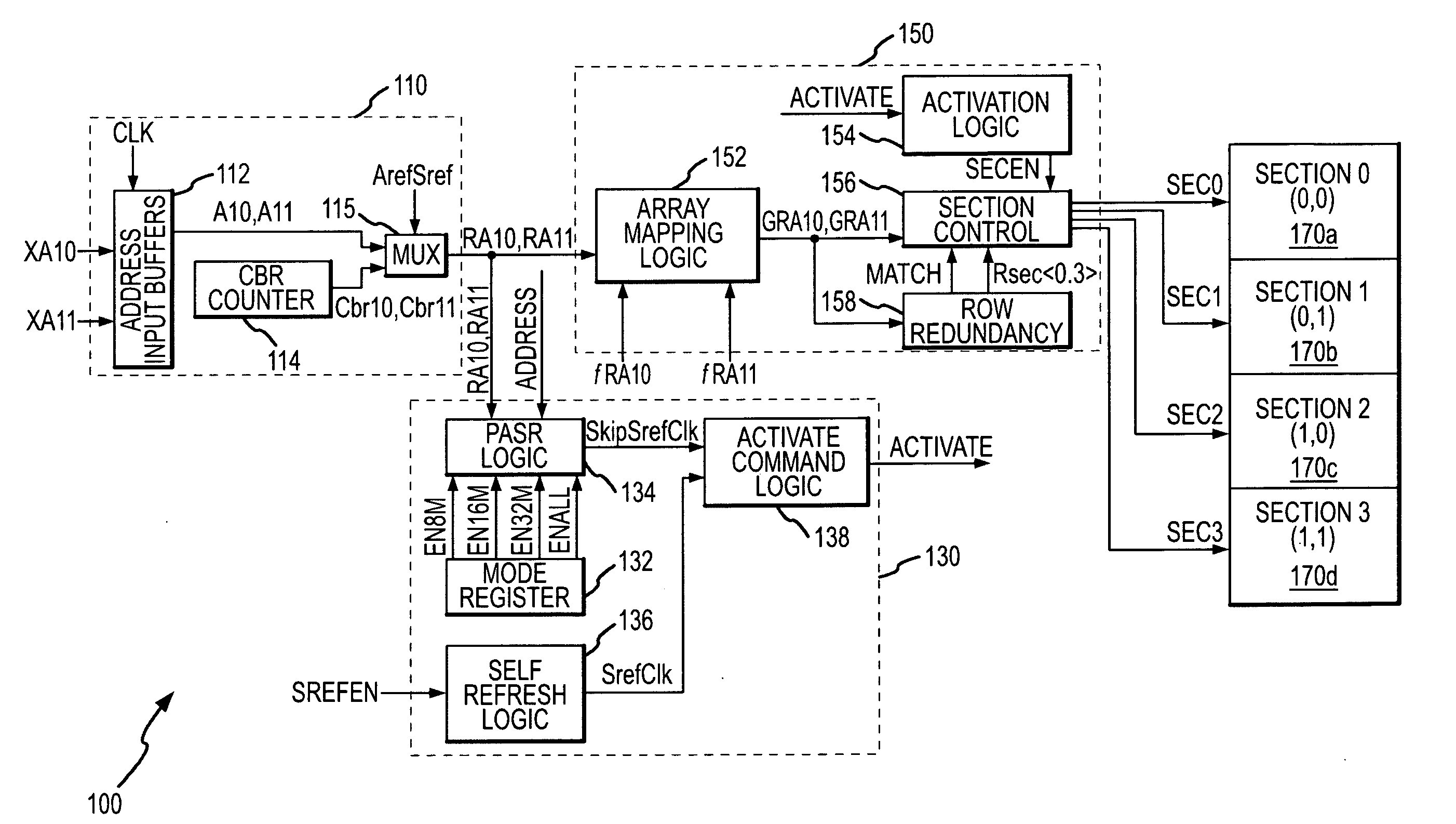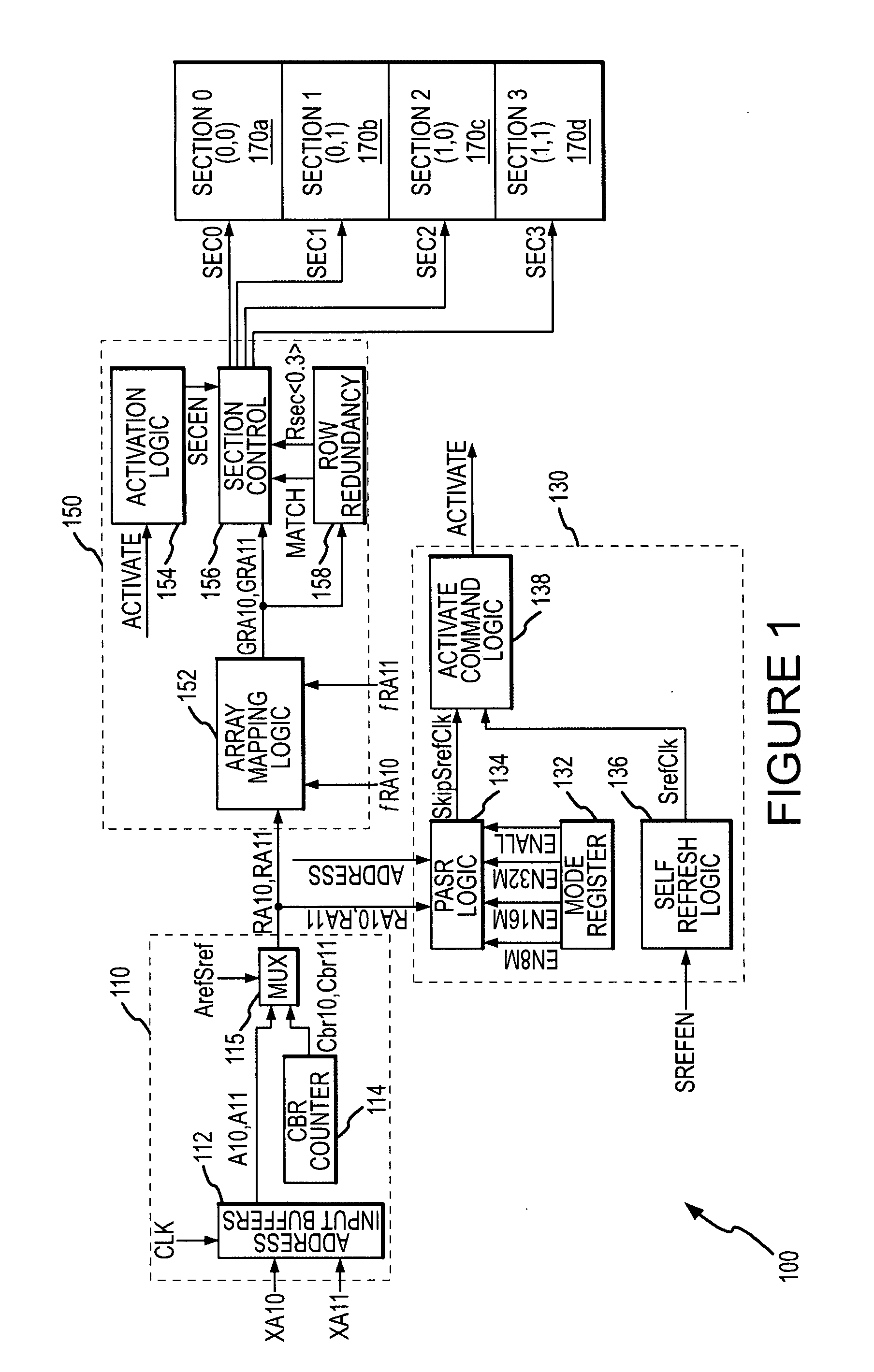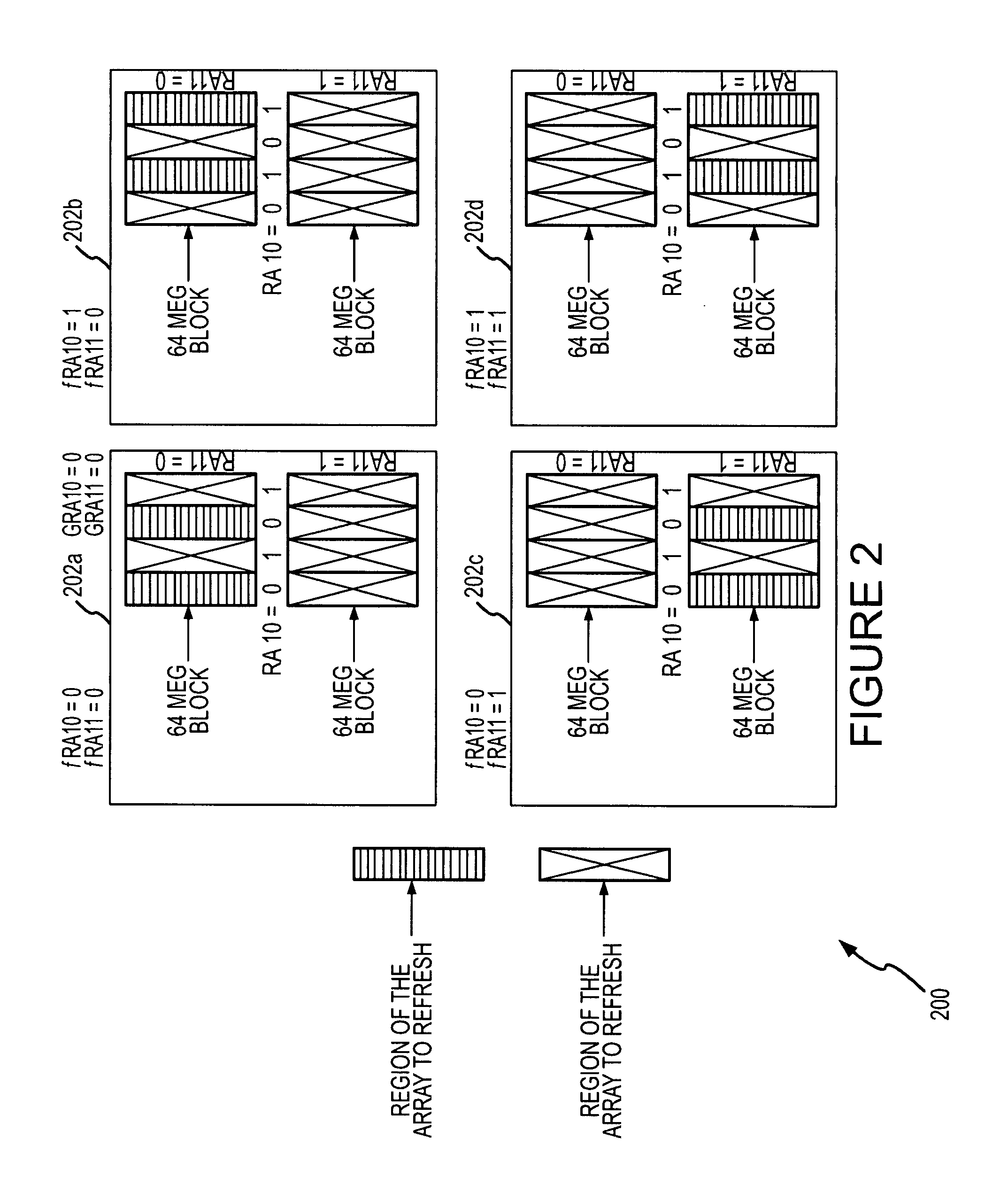Methods, circuits, and systems to select memory regions
- Summary
- Abstract
- Description
- Claims
- Application Information
AI Technical Summary
Problems solved by technology
Method used
Image
Examples
Embodiment Construction
[0011]The explicitly disclosed embodiments of the present invention are directed to, for example, improving the performance of self refresh operations in memory devices, systems and methods. Certain details are set forth below to provide a sufficient understanding of the embodiments of the invention. However, it will be clear to one skilled in the art that embodiments of the invention may be practiced without these particular details. In other instances, well-known circuits, circuit components, control signals, and timing protocols have not been shown in detail in order to avoid unnecessarily obscuring the embodiments of the invention.
[0012]FIG. 1 is a block diagram of a DRAM memory device 100 showing an array mapping logic module 152 for mapping regions of a memory array 170 according to an embodiment of the invention. The DRAM memory device 100 is shown in simplified form, it being understood that DRAM devices typically include a large number of other components, which have been o...
PUM
 Login to view more
Login to view more Abstract
Description
Claims
Application Information
 Login to view more
Login to view more - R&D Engineer
- R&D Manager
- IP Professional
- Industry Leading Data Capabilities
- Powerful AI technology
- Patent DNA Extraction
Browse by: Latest US Patents, China's latest patents, Technical Efficacy Thesaurus, Application Domain, Technology Topic.
© 2024 PatSnap. All rights reserved.Legal|Privacy policy|Modern Slavery Act Transparency Statement|Sitemap



